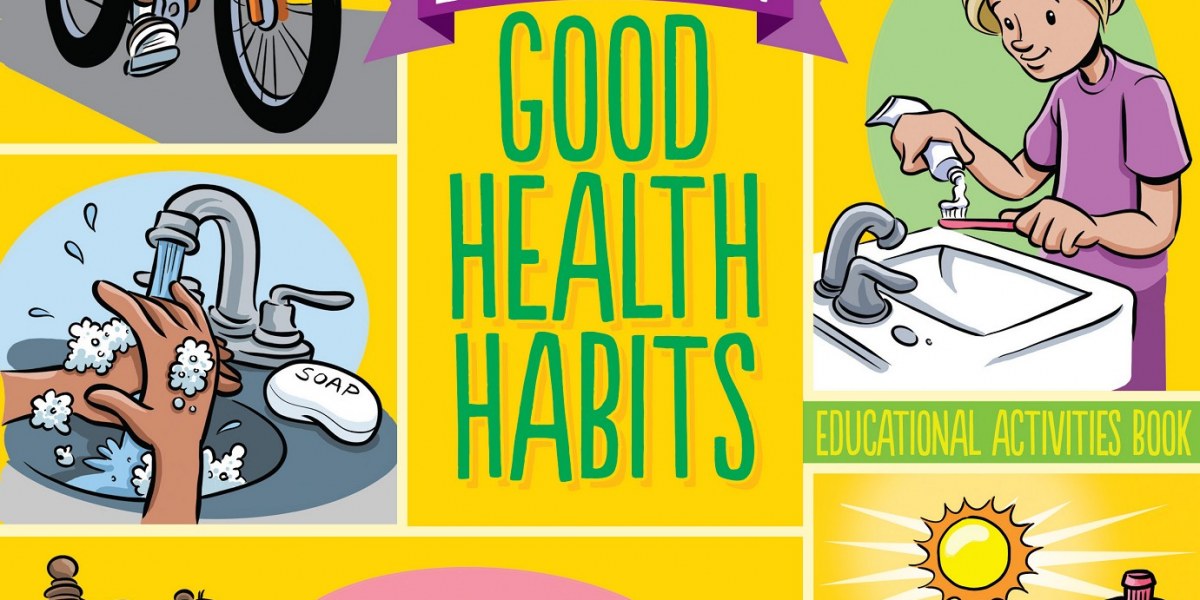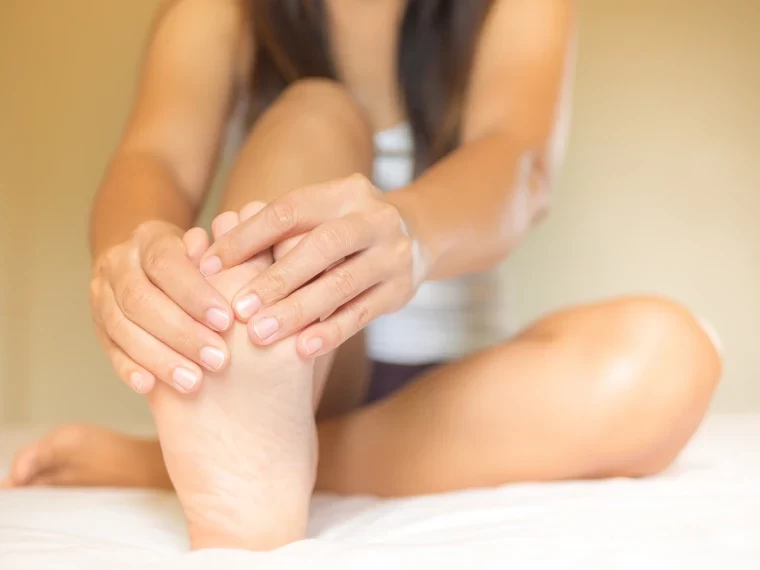Top Questions about fitness and women
Being physically active is one of the most important steps you can take to get and stay healthy. Women of all ages, shapes, and abilities benefit from getting active. Regular physical activity (exercise) can help lower your risk for many diseases that affect women, including heart disease and stroke. Exercise can also help relieve symptoms of some conditions, such as depression, type 2 diabetes, and high blood pressure. Women need to do different types of physical activities to reach or stay at a healthy weight and build strength and endurance. Read on to learn more about fitness and women.
Q: How can physical activity help my health?
A: Getting regular physical activity is one of the best things you can do for your health. Regular physical activity can help:
• Lower blood pressure and cholesterol
• Improve depression
• Improve sleep
• Lower your risk of diseases such as breast cancer, colon cancer, type 2 diabetes, heart disease, and stroke
• Lower your risk of dying early
Q: How much physical activity should I do?
A: Each week, women should get at least:
• 2 hours and 30 minutes (150 minutes) of moderate-intensity aerobic physical activity. You know you are doing a moderate-intensity activity when your heart is beating faster but you can still carry on a conversation. Try a brisk, 30-minute walk five times a week.
OR
• 1 hour and 15 minutes (75 minutes) of vigorousintensity aerobic activity. You know you are doing a vigorous-intensity physical activity when you are breathing hard and it is difficult to have a conversation. This could be a 40-minute jog or step class twice a week.
AND
• Muscle-strengthening activities on two or more days.
Q: Can I exercise if I have underweight, overweight, or obesity?
A: Maybe. People who are underweight due to an eating disorder should not exercise unless their doctor tells them to. Women who have overweight or obesity should talk to their doctor or nurse about any concerns they have about beginning an exercise program.
For most people, any amount or type of physical activity will help your overall health. Physical activity can also improve muscle strength, balance, and flexibility.
Start slowly if you haven’t been physically active before or if it has been a while. Talk to your doctor or nurse about exercise if you have a health condition. Your doctor or nurse can help you develop an exercise plan that is healthy and safe for a person of your current weight and fitness level.
Q: Can exercise help menstrual cramps?
A: Maybe. Researchers have found that some women have fewer painful cramps during menstruation if they exercise regularly. There are almost no risks to regular physical activity, like walking, which may also help you feel better during your period.
Q: Is it safe to exercise during pregnancy?
A: Physical activity during pregnancy is usually safe and healthy for you and your baby. And the more active you are during pregnancy, the easier it will be to start getting active after your baby is born. Talk to your doctor about your activity level throughout your pregnancy.
Q: How can I avoid weight gain after menopause?
A: As you age, and especially in the years after menopause, you may find it harder to maintain your weight. You may need to increase the amount of physical activity you get and lower how many calories you eat to stay the same weight.
Q: How can physical activity help older women?
A: As you get older, regular physical activity helps:
• Keep bones strong
• Prevent hip fractures (breaking your hip)
• Decrease pain from arthritis
• Prevent dementia
• Maintain your independence
Balance exercises are important for all women, but especially older women who are at a higher risk of falls. Examples of these exercises include tai chi and standing from a sitting position.
If you would like to learn more about fitness and women, contact us for a consultation to see how we can help you.
Is there a relation between President’s Day & Fitness? President’s Day is a federal holiday in the United States that falls on the third Monday of February. It is a day to commemorate the life and legacy of past presidents, most notably George Washington and Abraham Lincoln. While the holiday has traditionally been a day to honor the memory of our nation’s leaders, it can be a day to celebrate physical fitness.
The importance of physical fitness has long been recognized by our nation’s presidents. George Washington was an avid outdoorsman, and he believed in the importance of physical activity for maintaining health and well-being. He wrote in his 1796 farewell address that “a decent attention to physical exercise is due to every human being. Abraham Lincoln was also a proponent of physical fitness, and he known to take long walks and ride horses for exercise.
On President’s Day, many people take advantage of the holiday to participate in physical activities. For some, this may mean a leisurely stroll through a local park, while for others it may mean engaging in more strenuous activities such as running, biking, or playing sports.
For children, President’s Day is a great opportunity to get outside and explore nature’s playground. Physical fitness is essential for overall health and well-being. It can improve cardiovascular health, help to manage stress, and strengthen bones and muscles. Regular physical activity can also help to reduce the risk of developing chronic diseases such as diabetes, heart disease, and cancer.
President’s Day is a day to remember our presidents and their contributions to our nation. But it is also a day to remember the importance of physical fitness.
So this President’s Day, take the time to get outside and get moving. Whether it’s a leisurely walk, a bike ride, or a game of pick-up basketball, make sure to honor the legacy of our presidents by making physical fitness a priority.
Make President’s Day & Fitness a priority for your personal health.
FYI: The number on the scale isn’t always an indicator of overall health.
Does fat weigh more than muscle, or does muscle weigh more than fat? While it seems common knowledge that muscle weighs more, that’s not quite right. The answer depends more on the volume of each.
Consider the trick question: “What weighs more, a pound of feathers or a pound of bricks?” The answer, of course, is neither. A pound is a pound, regardless of the material. However, that pound of feathers will look bigger and fluffier than a compact pound of bricks.
So, while we’re talking about the weight of both, the root of the question is really body size and body composition. While it should be said, first and foremost, that body size or weight is not necessarily an indication of health, there is some truth behind the saying that muscle weighs more than fat.
You can be slimmer at a heavier weight than someone lighter, depending on how much non-fat mass (muscle, bones, and organs) you have in proportion to fat mass. Here’s what you need to know.
Does Muscle Actually Weigh More Than Fat?
The short answer: Yes, it does weigh more than fat—by volume. It will weigh more if you take a bowl of fat and compare it to a same-sized bowl of muscle.
That’s the simple answer. But much more goes into that question, mainly how your body responds to these two tissues.
Muscle weighs more than fat because it’s denser. If you hold a fistful of muscle, it will weigh more than a fistful of fat because you technically have more compact tissue in your hand.
The catch: That number on the scale shouldn’t matter here because the benefits of having more muscle tissue in the body outweigh having more fat tissue.
How Having More Muscle Affects Your Health
Muscle is a star player in keeping your body happy and healthy long-term for several reasons.
For starters, lean muscle mass can help manage blood sugar, keeping Type 2 diabetes at bay. A 2017 study published in PLoS One found a negative association between muscle mass and Type 2 diabetes—specifically, higher muscle mass meant a lower chance of developing the condition.
“The number one consumer of blood sugar in the human body is skeletal muscle,” explained Tim Church, MD, MPH, Ph.D., professor of preventive medicine at Pennington Biomedical Research Center at Louisiana State University. So, the more muscle you have, the greater your potential to stabilize your blood sugar.
As a bonus, the blood sugar-regulating effect is instant and lasts after exercise. So if you do a workout today, your muscles will utilize blood sugar better over the next 72 hours, Church said.
Also, as you age, you’ll want a healthy amount of muscle rather than fat.
“Muscle is a commonly overlooked marker of healthy aging,” Church said. You start losing muscle mass around age 40 or 45. This age-related decline in muscle is known as sarcopenia, one of the biggest reasons many older adults can have trouble doing simple tasks without help.
“You can’t put your jacket on, push yourself off the toilet, and get yourself off the ground after you fall,” Church said. “It all comes down to strength and muscle mass.”
Even better news is that muscle can help you maintain a healthy weight by raising your basal metabolic rate or the number of calories you burn at rest. Exactly how many extra calories you’ll burn by adding muscle is unclear.
Lastly—and least importantly, in terms of health—the muscle density might cause it to weigh more, which also means it takes up less space in the body. If someone gains 10 pounds of muscle, a lot of times they’ll barely notice that on their body, whereas, if you gain five or 10 pounds of fat, you definitely notice that.
How Having Too Much Fat Affects You
While it’s easy to see fat as an enemy, you need body fat to survive and thrive. Fat tissue plays a few critical roles, from regulating body temperature and producing hormones to supporting brain health and insulating organs, said Church.
According to the American Council on Exercise (ACE), healthy body fat percentages for women range from 10%-31%. For men, it’s 2%-24%. The American College of Sports Medicine recommends 25% as the maximum for men older than 60.
However, it’s important to note that the lower recommended body fat percentages often indicate a trained athlete and may not be realistic, sustainable, or healthy for the average individual.
“People think fat is just excess energy storage, but it’s really the number one driver of inflammatory markers in your blood,” Church said. Chronic, or long-term, inflammation can contribute to various conditions, including Type 2 diabetes, arthritis, inflammatory bowel disease, and obesity.
A high body fat percentage has also been linked to heart problems. There’s a strong correlation between higher levels of body fat and an increased risk for cardiovascular disease and a number of other health issues.
How To Lose Fat and Gain Muscle in a Healthy Way
Strength training is the smartest move for building muscle and cutting back on fat.
If you only have a limited amount of time to work out, strength training is exponentially more powerful; you could manipulate work and rest ratios to get more cardio benefits from your strength routine.
It is recommended doing a full-body strength routine at least twice a week. Try lifting to the point of near-failure in each set—that means those last one or two reps should feel nearly impossible to do without breaking form.
If you’re trying to shed fat while building muscle, keep the rest periods short between sets (30 to 60 seconds) to crank up the intensity of the sweat session. Choose five to six exercises (three lower-body, three upper-body) and shoot for 3-4 sets of 6-12 reps per move.
In a nutshell
Muscle tissue weighs more than fat tissue if both take up the same amount of space. So, if you have a cup of muscle and one of fat, the muscle will weigh more. But don’t let the prospect of weighing more keep you from building muscle, which will help you improve your health, reduce your risk of chronic disease, and age better.
Whether you’re a hardcore football fan or simply tune in for the commercials and halftime show, we all know the best part about the Super Bowl is the excuse to whip up some delicious Healthy Super Bowl Snacks. But if you try to be mindful of what you eat, we’ve got a game day PSA for you: With just a few easy tweaks, you can include all of the classics in your starting lineup—including messy wings and creamy dips—without throwing off your goals.
It all starts with a healthy eating strategy, says Leslie Bonci, M.P.H., R.D.N., owner of Active Eating Advice by Leslie and sports dietitian for the Kansas City Chiefs. “Choose foods that take longer to eat, such as dips or something that requires a utensil, like chili. If you can, set up the food in a room away from the TV so you have to get up and move every time you want more,” she says. “You can even try bringing out new dishes each quarter so you’re spreading out your eating instead of gorging all at once.”
Reimagining your menu can be helpful, too. See where you can sneak in extra nutrients, like buying bean-based chips (for filling fiber), mixing veggies into sliders, meatballs, or dips, choosing plant-based bites like cauliflower swapped for wings, or reaching for Greek yogurt instead of sour cream for dips. You can also consider serving individually wrapped packaged items for portion control and good hand hygiene, Bonci adds.
So, eating healthy on Super Bowl Sunday doesn’t have to end in a loss. Get creative and make it a game to find new and nutritious recipes to love. We promise that you won’t regret it and it will make a difference the next day!
Remember that at the Fitness Zone, we believe that Exercise is Medicine!
The health habits that you maintain can affect your body image, but how you think about your habits is also important. For example, if you go for a run, but you think of it as obligatory or as punishment (for eating? for living?), you’re unlikely to enjoy that run, this not a good health habit .
If you think of running as something you do to help yourself feel good, improve your health and take care of yourself, you might actually enjoy running more and find it easier to sustain this behavior and you have created a good health habit. Further, this mindset will likely support your positive body image as opposed to detracting from it. A patient recently shared that she had changed her mindset about exercise: ‘I decided I just needed to move every day and not worry about how “intense” my workouts are.’ By changing her mindset she created good health habits.
There is a fairly extensive psychological literature on goal setting and achievement that suggests that when we frame goals in terms of things we want to do (called approach goals) versus things we want to avoid (called avoidance goals), it’s typically easier to achieve our goals. A number of explanations have been offered for this, but one is that it can be difficult to avoid certain thoughts or behaviours entirely, making avoidance goals less satisfactory and less easily achieved.
How is this relevant to body image? It’s unlikely that you’ll be able to avoid all the behaviours that contribute to body dissatisfaction. If our goal is to completely avoid foods we deem unhealthy, then we’re likely doomed to fail. But if our goal is to eat foods that are nutritious, such as one or two pieces of fruit per day, we stand a better chance of meeting that goal. When we meet goals that are important to us, we feel a sense of pride that can motivate us to continue on a psychologically and physically healthy path.
The key is to reframe our behaviors in ways that make health habits sustainable. Punishing or shaming ourselves for not doing all the ‘right’ things is rarely an effective approach to good health habits (mental or physical) and can reinforce negative body image. Easing ourselves into healthy habits can be more effective for achieving enduring change. For example, using a gradual approach to become more physically active. Start out exercising two days a week for about 20 minutes per day, and slowly work your way up to 40 minutes about six times per week. Most importantly, don’t worry if one day you run out of time to exercise or just don’t have a good workout. Some days are like that. The important thing is to continue.
Here is a compilation of 20 ways to love your body:
- Think of your body as the vehicle to your dreams. Honor it. Respect it. Fuel it.
- Create a list of all the things your body lets you do. Read it and add to it often.
- Become aware of what your body can do each day. Remember it is the instrument of your life, not just an ornament.
- Create a list of people you admire: people who have contributed to your life, your community, or the world. Consider whether their appearance was important to their success and accomplishments.
- Walk with your head held high, supported by pride and confidence in yourself as a person.
- Don’t let your weight or shape keep you from activities that you enjoy.
- Wear comfortable clothes that you like, that express your personal style, and that feel good to your body.
- Count your blessings, not your blemishes.
- Think about all the things you could accomplish with the time and energy you currently spend worrying about your body and appearance. Try one!
- Be your body’s friend and supporter, not its enemy.
- Consider this: your skin replaces itself once a month, your stomach lining every five days, your liver every six weeks, and your skeleton every three months. Your body is extraordinary—begin to respect and appreciate it.
- Every morning when you wake up, thank your body for resting and rejuvenating itself so you can enjoy the day.
- Every evening when you go to bed you can tell your body how much you appreciate what it has allowed you to do throughout the day.
- Find a method of exercise that you enjoy and do it regularly. Don’t exercise to lose weight or to fight your body. Do it to make your body healthy and strong because it makes you feel good. Exercise for the Three F’s: Fun, Fitness, and Friendship.
- Think back to a time in your life when you felt good about your body. Loving your body means you get to feel like that again, even in this body, at this age.
- Keep a list of 10 positive things about yourself—without mentioning your appearance. Add to it daily!
- Put a sign on each of your mirrors saying, “I’m beautiful inside and out.”
- Search for the beauty in the world and in yourself.
- Consider that, “Life is too short to waste my time hating my body this way.”
- Eat when you are hungry and rest when you are tired. Surround yourself with people that remind you of your inner strength and beauty.
Stay healthy by joining a fitness club and also by establishing good health habits such as eating correctly.
A treatable foot condition that affects millions
Plantar Fasciitis is among the most common causes of foot pain, with approximately 2 million cases per year in America, according to Orthoinfo. The Plantar Fascia is the strong band of tissue that forms a connection between your toes and heel bone. When it becomes strained or damaged, it can become irritated and inflamed, resulting in severe heel pain when standing or walking.
Typically, those afflicted with plantar fasciitis experience sharp, stabbing pain in the heel, especially after taking their first steps in the morning. As the patient continues to move around throughout the day, the pain may subside, only to return after a long period of standing or sitting.
There are several potential causes of plantar fasciitis, including feet rolling inward while walking, high arches, flat feet, overuse through running, obesity, poor shoes, and tight calves or Achilles tendons.
Luckily, the condition is usually treatable, and theta are many remedies for discomfort. Consistently performing toe and calf stretches should help but be careful not to overstretch and make the problem worse. Rest, ice, and anti-inflammatory medicines like ibuprofen will also go a long way, but they are unlikely to eliminate the problem.
Your best bet for escaping plantar fasciitis is through a comprehensive physical therapy program. During treatment, therapists will provide a battery of non-weight-bearing stretches that specifically target the plantar fascia, working on the related areas of the body as needed. Often, patients will begin to see results within a few therapy sessions.
Don’t let plantar fasciitis keep you off your feet. Neglect can lead to a chain reaction of further issues, not to mention a consistent increase in pain. Let us work with you to fix the problem at its source.
The Fitness Zone is not only a place to work out, it is your place for health and wellness. If you feel physical discomfort, ask to speak with one of the Physical Therapists at the Human Performance and Wellness Center and schedule an appointment.
Remember, Exercise is Medicine!
Earthing: Sleep Like You’re on Vacation
Have you ever fallen asleep on the beach after swimming in the ocean?
If you have, you know it’s the most restful and relaxing sleep imaginable. You might have thought it was just the result of warm sunlight and vacation vibes, but research suggests you may have been experiencing the effects of a practice called “earthing.”
Earthing, sometimes referred to as “grounding,” helps bring out bodies into a natural balance. The theory states that our bodies naturally develop a positive charge. As leading nutritionist Dr. John Briffa explains, “During the normal processes of metabolism, the body generates what are called ‘reactive oxygen species’, which are commonly referred to as ‘free radicals’ – Free radicals lack sparks of energy known as ‘electrons.’” When a molecule lacks electrons, it gives off a positive charge.
An unbalanced positive charge contributes to inflammation, which can then cause many chronic diseases, including heart disease. You should balance your natural positive charge with a negative charge. How can you safely expose yourself to a negative charge? Just let your skin touch the earth.
Earth gives off a mild electric charge, with plenty of electrons to balance out our overabundance of free radicals. There has yet to be a large-scale scientific study about the benefits of earthing, but current research is promising. One study published in The Journal of Alternative and Complementary Medicine found earthing helps reduce blood viscosity, which is a major factor in cardiovascular disease. Another study in the Journal of Inflammation Research showed that earthing might speed up healing. Firsthand accounts from individuals who practice earthing often report lower stress levels, increased energy, and better sleep.
Many people who practice earthing make it a point to walk outside barefoot on grass, soil, or sand at least once a day. You should be careful where you walk, as you don’t want to get cut on sharp rocks or broken glass. An alterative to walking barefoot is to use an earthing pad, which can imitate the negative charge of our planet inside your home.
Earthing is quickly gaining a following in the health community. If you are looking for a natural way to improve your overall health and sleep better, why not try taking a walk? Just remember to leave your shoes behind.
From exercises to specific drinks and foods, Dr. David shares his personalized tips that will help you control the damage that can occur after feasting during the holidays. Watch and read along with Dr. David as he explains each tip!
Don’t forget to leave us your comments and reviews about these 8 damage control tips.
More and more people are turning to healthy drinks as an alternative to healthy eating, and scientific findings are only encouraging the trend

You have more control over stressful situations than you think because, stress management is about taking charge of your lifestyle, thoughts, emotions, and the way you deal with problems. No matter how stressful your life seems, there are steps you can take to regain control.
IDENTIFY SOURCES
Chronic stress is hard to recognize. Look closely at your habits and excuses. Do you explain it as temporary or, do you define it as an integral part of your life? Do you blame your it on others? If you don’t recognize your role in creating or maintaining it , you will never be able to control it.
FIND HEALTHY STRATEGIES
Withdrawing from loved ones, bingeing on food or alcohol, procrastinating, and sleeping too much are all unhealthy ways to deal with stress. Instead, find unique, healthy coping strategies. Focus on what makes you feel calm and in control.
AVOID, ALTER ADAPT, AND ACCEPT
Some stressors are predictable. Learn how to predetermine your reactions by choosing to avoid, alter, adapt, or accept. Avoid people or situations that stress you out. Talk about your feelings instead of bottling them up, create a balanced schedule, reframe your problem look at the big picture, and practice gratitude. It’s critical to look at the glass as half-full and learn to forgive.
MAKE TIME FOR RELAXATION
Nurturing yourself is a necessity, not a luxury. If you make ample time for self-care, you will be in a better place to handle life’s stressors. Give yourself options like going for a walk, calling a good friend, journaling, or reading a book.
LIVE A HEALTHY LIFESTYLE
There are healthy lifestyle choices that can increase your resistance to stress. Eat a healthy diet; reduce caffeine and sugar; avoid alcohol, cigarettes, and drugs; get enough sleep and exercise regularly.
Stress is unavoidable, but it doesn’t have to dictate your life. With management techniques, you can avoid chronic stress, reduce your stress levels, and live your life to the fullest.
The Fitness Zone, where Exercise is medicine









